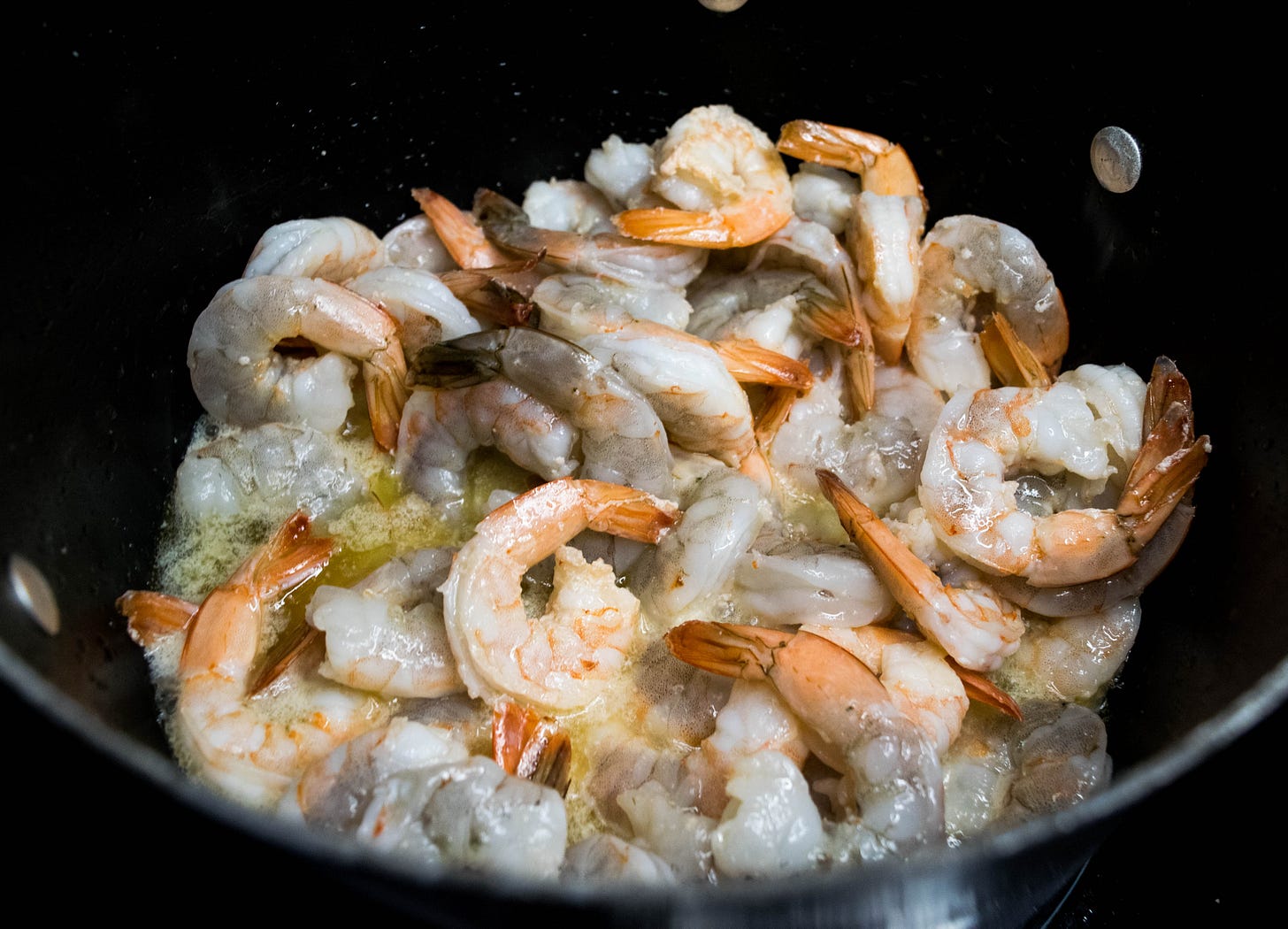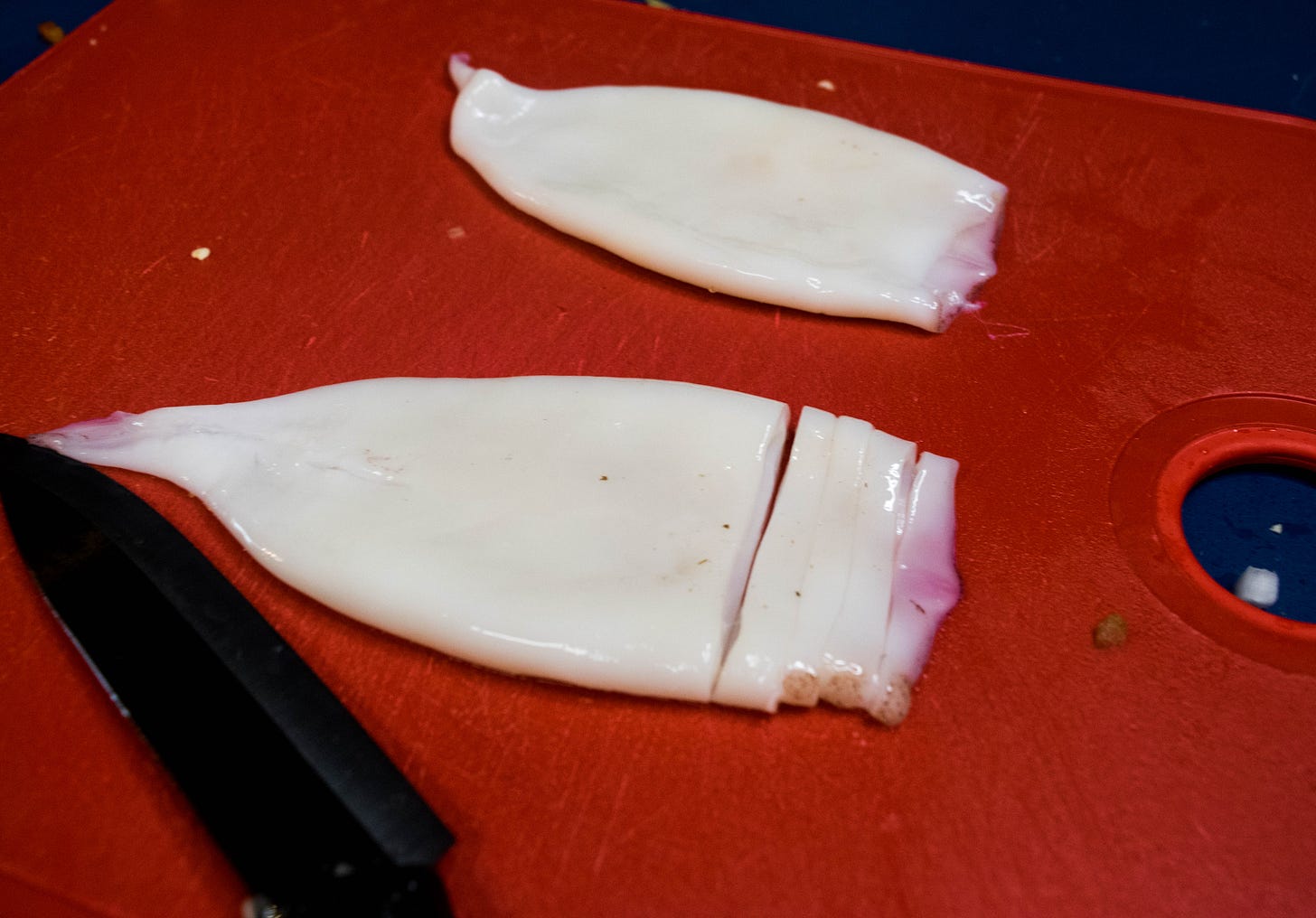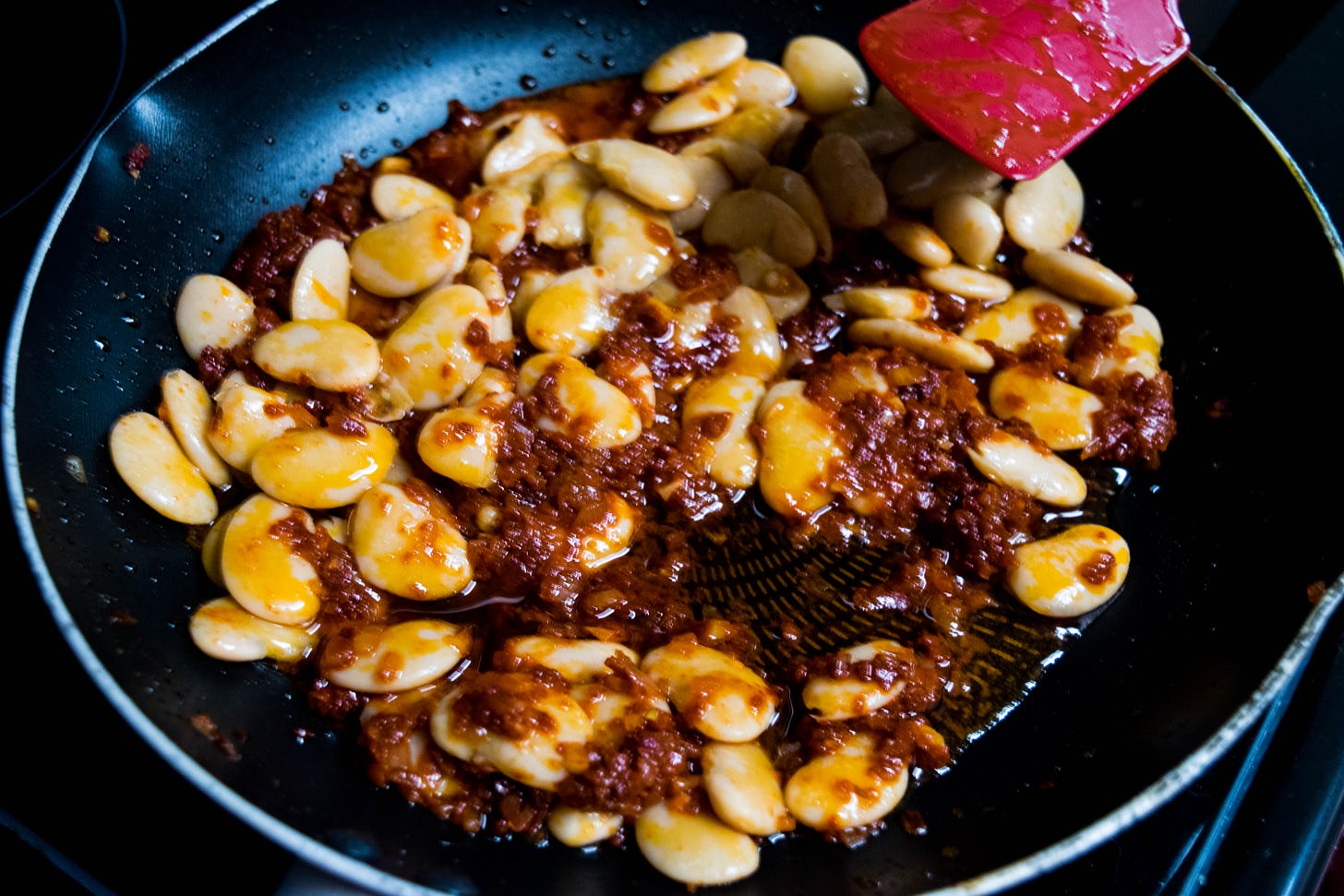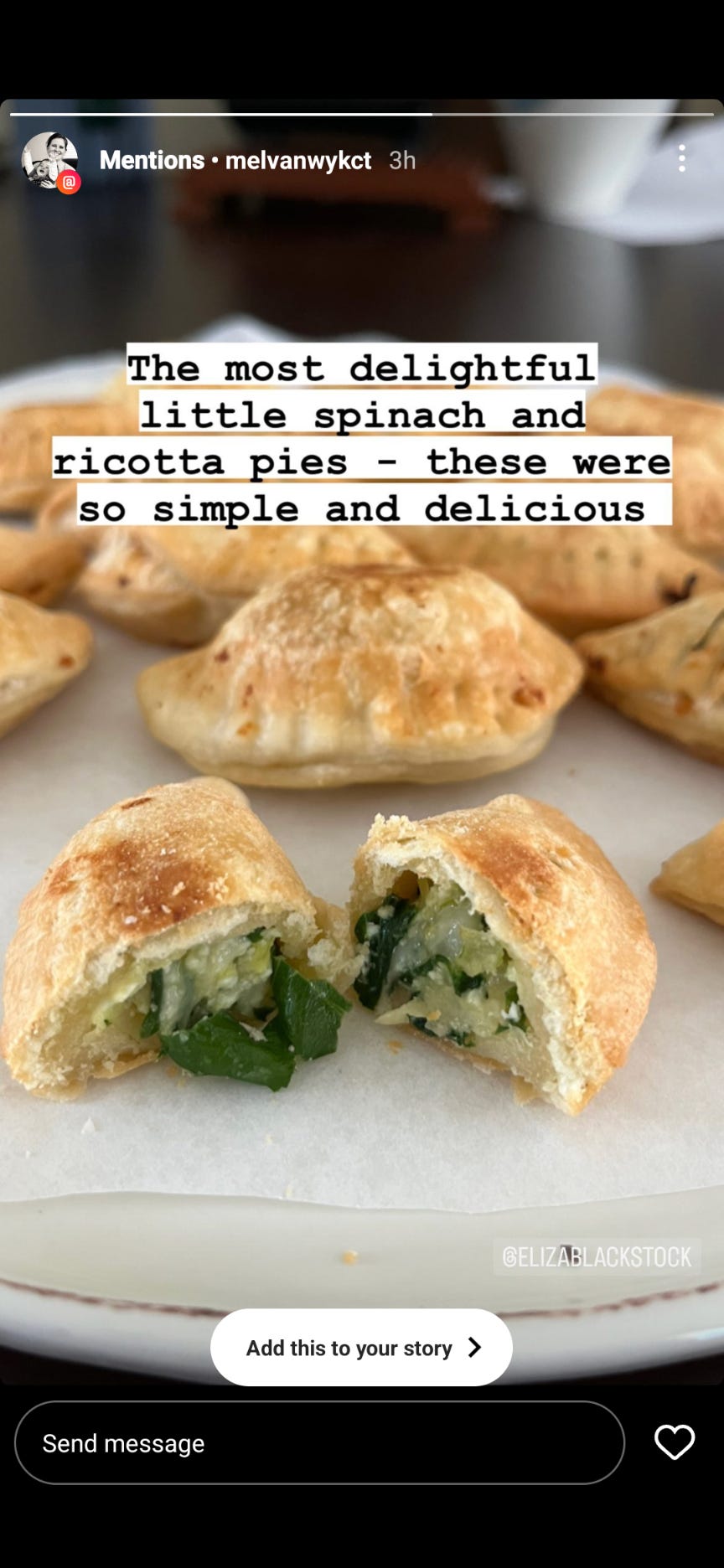Piles of Paella: Cooking for the Spanish Grand Prix
Welcome to Grand Prix Gastronomy! This week, I’m cooking paella, one of Spain's most iconic dishes.
This project is pretty simple. As a complement to each race weekend, I’ll be cooking the national dish of that race’s host country and sharing information about the process and that dish’s history along the way in an effort to grow more deeply immersed in the local culture from my own home.
What Is Paella?
Paella is largely considered to be the national dish of Spain by those of us who don’t actually live in Spain; Spaniards are more likely to consider it the regional dish of Valencia. But because I am merely an American looking in from the outside, I’m joining the group that sees paella as the country’s national dish. Sorry!
Paella unites two different cultures: Arabian and Roman. Arab settlers in Spain first brought rice cultivation to the country, while Romans brought the large, shallow frying pan typical of paella. It started off being one of those big one-pot meals that farmers loved to nab for lunch thanks to the fact that it was fairly simple to throw everything into a big ol’ pan and call it good. As history evolved, paella spread from the Valencia area to other areas of Spain, where it incorporated locally available ingredients. From the original rabbit and beans came the seafood paella that we Americans tend to consider typical of the dish.
Simply put, you can throw anything into this meal and it’ll probably be good.
This Week's Recipe
Because paella is so deeply tied to its region, I aimed to find a recipe typical of the Catalonian region — and settled on this gorgeous recipe from Food52. It comes from a chef recognized by the Michelin Guide (did you know chefs can’t earn Michelin stars, only restaurants?), and it’s derived from a recipe that has allegedly been passed down through generations of chefs in Barcelona. Is that true? I don’t know. But the ingredients looked fantastic, so I was sold.
You’ll create your very own broth with this recipe, and you’ll also be adding in a ton of different sea creatures: shrimp, mussels, clams, squid, and monkfish. You can skip that step if you want and use a store-bought broth instead — but I promise that extra bit of effort is worth it if you’ve got the time.
I also recommend finding bomba rice if you can; this is the rice style typical of paella. I ordered mine on the internet since I couldn’t find it in any stores near me.
I’m kind of in the throes of a Spanish food obsession right now (it sounds weird to say, but I’ve really just started sampling it for the first time), so I got a little wild with the tapas-style spread. I baked up a pan de payés, also typical of the Catalonian region (note: this recipe is in Spanish). You’ll hear more about my current obsession with beans in a later edition, but I also decided to whip up this tomato and butter bean dip that is divine on the aforementioned bread. I also decided on a little charcuterie board (another desperate obsession of mine right now), so my spread features Marcona almonds and a little selection of Spanish meats and cheeses I could find at the grocery store: cordobes cheese, a Spanish smoked goat cheese, Serrano ham, and chorizo.
(I am aware this is a lot of food and that I am but one person, but the charcuterie makes a great lunch, and the paella turned out to be exceptional leftovers… for several days in a row.)
Cooking Paella
Before we even begin, I'm going to offer you a crucial piece of advice: use literally any other recipe than the one I included, especially if this is your first time making paella (and it was mine). It assumes you'll have a lot of prior knowledge on the cooking process, which I did not. The ingredients list features items that are not included in the description of the cooking process, and vice versa. I spent a significant portion of this week shrugging my shoulders and saying, “fuck it, we ball” at every possible opportunity. Just get a different recipe. Please. I beg of ye.
With that out of the way, I want to address one other big concern I had this week: most of the seafood listed in the recipe simply does not exist in grocery stores here in Central Texas. I could have placed some orders online to tick off all the appropriate boxes, but paying $40 for next-day dry-ice shipping just for a 12-oz filet of monkfish felt like a fiscally irresponsible choice. I perused my local stores and decided to make a few substitutions. I picked a basic de-veined shrimp to make up the broth, substituted all of the shellfish for mussels, grabbed two squid tubes, and exchanged the monkfish for scallops. I also realized about halfway through the cooking process that I simply did not have a large enough paella pan for the recipe, so I halved the amount of rice and broth on the fly and prayed for the best. (Also, I totally fucked up my bread recipe, but that is a story for later.)
Alright. We've got that out of the way. Now: cooking the paella.
I think the thing I liked most about this dish was the fact that it was honestly pretty simple. If you know basic kitchen skills like boiling, simmering, chopping, and sautéeing, you'll pretty much be set to knock this out of the park. The main thing you're going to need is patience.
First up, you can make a homemade seafood broth if you so choose — and I really recommend it, because it was so easy. I sautéed some deveined shrimp, stirred in some diced tomato (which I forgot to include in my photos!), then topped it all up with water. Bring it to a boil, then drop that down to a simmer and let it all marinate away for at least 45 minutes. When the broth is done, strain it through a mesh sieve to remove any big pieces of shrimp or tomato.
I set my pot a-marinating while I prepped the rest of my food, which basically just meant mincing onion, green and red bell peppers, and garlic, then slicing up the squid tubes. If you're making any of the other sides to go with this dish, this is a great time to prep them, too! (I made my bread and bean dip the night before.) In the meantime, preheat your oven to about 400-450 degrees.
Once you've strained your broth, pop your paella pan on the stove, heat some oil, and then really cook down your onions (if it takes 20 minutes or less, you haven't gone far enough), then stir in the garlic, peppers, and squid slices. Once the squid has cooked, add in your broth and rice (bomba if you can find it, otherwise Spanish or other short-grain rices will do). Stir it up and get it simmering, letting it cook for a moment on the stove. Then go ahead and pop your paella pan into your preheated oven and let it continue to cook for a little under 10 minutes.
After I pulled my paella out, I tented it with some aluminum foil and let it rest and finish cooking as I set up my spread. This will help the rice soak up any last liquid before serving.
I served my paella alongside a chilled albariño white wine, which is a perfect pairing for seafood or other light meats. It's light and a little salty, so if you're opting for a highly spiced dish (or if you substitute a meat like chorizo), you'll want to make sure you nab a drink robust enough to stand up to something a little more hearty!
So, What's the Verdict?
I truly cannot believe I have gone my entire life without consuming paella before Grand Prix Gastronomy. It's one of those dishes that I always mean to try, but Spanish food isn't really a big thing in Texas, and the places that do offer it often only offer a full-sized meal for a group. Sure, I could bring it all home, but it's always felt kind of silly going out on my own and ordering enough food to serve eight people (especially when I can just order tapas to my heart's content).
While I really loved this dish, I do know that I'm going to need to remake it. The recipe I worked from left a lot of open questions and I don't know that it was incredibly typical of paella. My recipe didn't include saffron! I didn't even notice until I was finishing up and realized my version was so pale it might start sparkling in the sun!!! As I mentioned, definitely don't use the recipe I linked (but I am including it so you know what I worked from). You will be better served with literally anything else.
Also, my confidence in baking my bread was simply too high, both in terms of my cooking ability and also my ability to read Spanish. I'm pretty certain I did not do, like, anything right, which resulted in a loaf so flat it looked like the carbonized lump they found at Pompeii, except I think that probably had better air pockets. I should have asked for translation help, but I entered the baking process with the kind of hubris that got Caesar killed.
Alas! The bread served its purpose in channeling obscene amounts of butter bean dip into my face and also as a base for my Spanish charcuterie tray, which mostly just turned into me layering cheese, chorizo, and spicy honey on a thick slice of bread and calling it a breakfast. If you, like me, made this whole spread for just one person, the great news is that it can be your every single meal for a whole week!
Overall, I was jazzed by the whole project. I got to use a knew kitchen tool in the form of my paella pan, I confronted my aversion to cooking seafood at home, and I also learned where to buy delicious seafood within a 30-minute drive. For all my blunders, I'll chalk this one up as a win.
Let's Chat! It Was Indy 500 Week!
Listen: I know this is theoretically and exclusively a Formula 1 project, but no one invited me to go to Monaco, and Honda invited me to come to the Indianapolis 500, which is easily one of my two favorite events of the year (tied with the USGP in Austin, but both for drastically different reasons). I've already written about my takes on the winner, the finish, the series’ responsibility to Josef Newgarden, and my own pre-race traditions, but because this is a food project, I mostly just wanted to note that after six years of attending the race, I finally got to have a steak and shrimp cocktail at St. Elmo's. It lived up to the hype. I haven't stopped thinking about it since.
If you want to stay tuned…
Here are all the relevant links in one place, if you want to subscribe:
All Grand Prix Gastronomy-related content will be free — but if you want to drop me a donation on PayPal, that’s always welcome.


















Really enjoying these, Elizabeth!